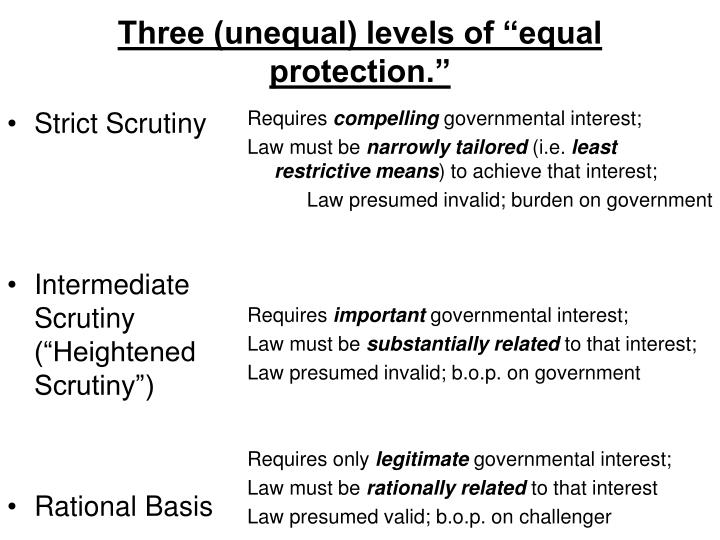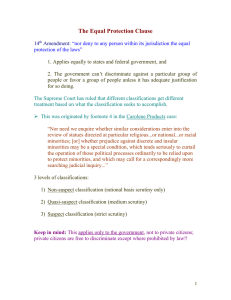
Intermediate scrutiny applies to the quasi-suspect classifications of gender and illegitimacy. This is a challenging standard to meet, and a law usually does not survive strict scrutiny. The law must be narrowly tailored and use the least restrictive means to further that interest. Strict scrutiny requires the government to identify a compelling government interest and prove that the law is necessary to serve that interest. It also applies to certain classifications that impose burdens on fundamental rights, including marriage, procreation, voting, moving between states, and access to courts. First, strict scrutiny applies to classifications based on race, national origin, religion, and alienage. Standards of Review in Equal Protection CasesĬourts may apply three standards of review in equal protection cases. However, the Supreme Court has indicated that these proxies for racial classifications stand on equally uncertain constitutional ground. As challenges to affirmative action have grown, some public entities have replaced these programs with race-neutral programs that are based on characteristics that tend to correlate with race. This involves giving certain minority groups advantages in processes controlled by the government, such as competitions for government contracts or admission to public universities. Scholars of constitutional law are divided on whether the equal protection doctrine permits affirmative action.

Additional classifications subject to enhanced review include: It has been interpreted to prohibit race discrimination against any minority group, rather than just African-Americans, and it applies to discrimination against groups defined by traits other than race. However, the equal protection doctrine has expanded far more broadly over time. Board of Education, which struck down school segregation. Perhaps its most famous application occurred in the 1954 Supreme Court decision in Brown v. The Equal Protection Clause initially was intended to prevent government discrimination against African-Americans in the wake of the Civil War.

Therefore, it also applies to actions by the federal government. While the Fourteenth Amendment applies only to the states, this principle has been "reverse incorporated" into the Fifth Amendment, which contains a Due Process Clause. Section 1 of the Fourteenth Amendment prohibits the government from denying the equal protection of the laws to any person.


 0 kommentar(er)
0 kommentar(er)
